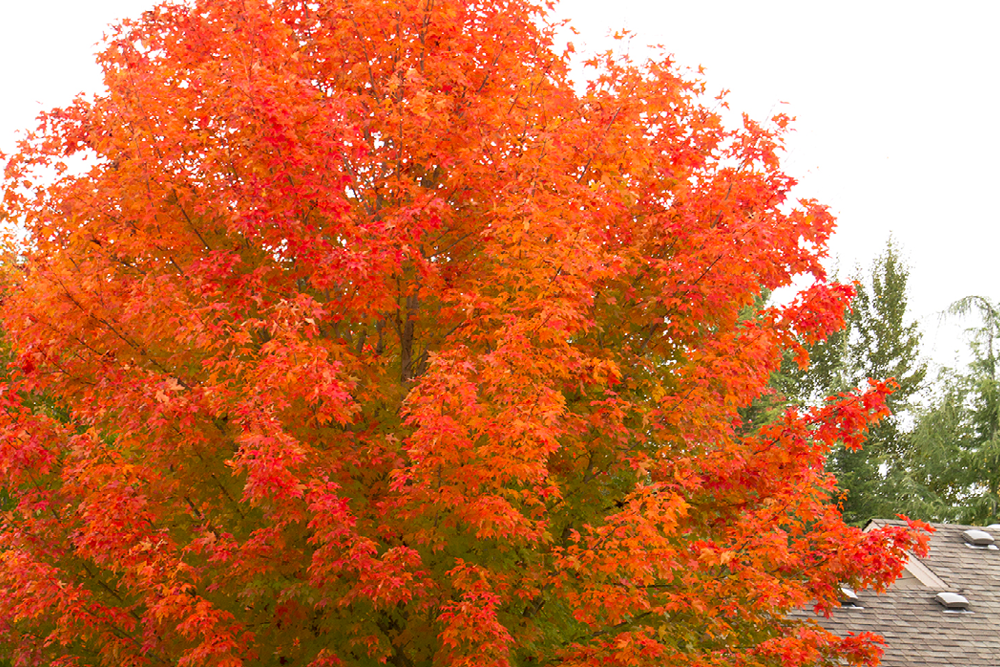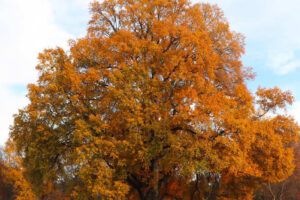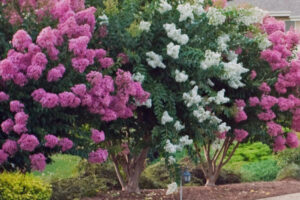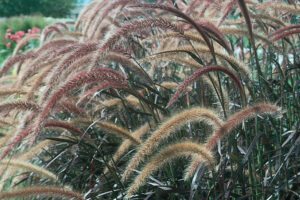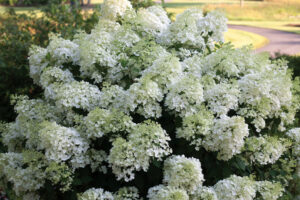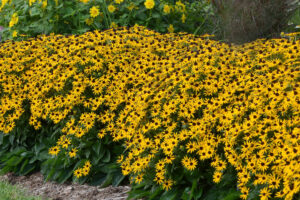Botanical Background
The October Glory Red Maple (Acer rubrum’ October Glory’) is a popular cultivar of the native Acer rubrum, commonly known as the Red Maple. The Red Maple is native to North America and is found in various habitats, from swamps to upland areas, from the Eastern United States to parts of Canada. European settlers first described it in the mid-1700s, and it quickly gained recognition for its brilliant autumn foliage.
The October Glory cultivar was bred specifically for its late fall color and excellent adaptability, making it an ideal landscape tree. Unlike the wild-type Red Maple, which may show variability in fall color and timing, October Glory was selected to display a reliable, vibrant scarlet-red color every autumn. This makes it one of urban and suburban landscapes’ most widely planted shade trees.
Introduction to Landscaping
October Glory was developed and introduced by plant breeders seeking a fast-growing, attractive, and hardy tree that could provide vibrant color late into the fall. It quickly became famous for its extended fall color, reliable growth habits, and minimal maintenance requirements. Today, it is a staple in many landscapes across the United States and is commonly found in parks, yards, and streets.
Interesting Facts about the October Glory Red Maple:
1. Late Fall Color: One of the defining characteristics of the October Glory Red Maple is its ability to hold its vibrant scarlet leaves longer than most deciduous trees. It typically retains its leaves into late fall, making it a favorite for those who want prolonged autumn color in their landscapes.
2. Fast-growing Tree: The October Glory Red Maple is known for its fast growth rate, which can reach 2-3 feet per year under ideal conditions. This rapid growth makes it a popular choice for homeowners and landscapers looking to establish shade quickly.
3. Brilliant Scarlet Foliage: October Glory produces brilliant red foliage in the fall, ranging from deep red to scarlet. Its glossy, dark green leaves in spring and summer enhance the fall color, creating a striking contrast.
4. Ornamental Shade Tree: This tree has a well-rounded, symmetrical canopy, making it an excellent shade provider. It reaches a mature height of around 40-50 feet, with a canopy spread of about 25-35 feet, making it ideal for larger yards, parks, and streets.
5. Adaptable to Various Conditions: October Glory Red Maples are incredibly adaptable to various soils and climates. They prefer moist, well-drained soils but can tolerate occasional drought and wet conditions. This adaptability makes them an excellent choice for many regions across the U.S.
6. Pollinator and Wildlife Friendly: Like other maple trees, the October Glory Red Maple produces small, red flowers in early spring, which attract pollinators like bees. Its winged seeds, called samaras, are a food source for birds and small mammals, adding ecological value to gardens and landscapes.
7. Relatively Low Maintenance: October Glory Red Maple trees are relatively low maintenance once established. They require minimal pruning and are resistant to many pests and diseases. Regular watering, especially during hot, dry periods, helps maintain their health.
8. Urban Tolerance: This tree is known for tolerating urban pollution and compacted soils, making it a popular choice for city streets and parks. Its firm wood makes it more resistant to storm damage than other fast-growing trees.
Key Growing Information
- Size: Reaches 40-50 feet in height and 25-35 feet in width at maturity.
- Growth Rate: Fast-growing, typically adding 2-3 feet per year.
- Sun Exposure: Full sun to partial shade.
- Soil Requirements: Prefers moist, well-drained soils but is tolerant of various soil types, including clay and sandy soils.
- Hardiness Zones: Best suited for USDA Hardiness Zones 4-9.
- Fall Color: Brilliant scarlet red, lasting longer into the fall than many other trees.
Benefits of the October Glory Red Maple
1. Extended Fall Interest: The October Glory Red Maple provides some of the latest fall colors, ensuring that landscapes stay vibrant longer than with many other deciduous trees. The deep scarlet red foliage is a showstopper in autumn gardens.
2. Shade Provider: With its fast growth rate and wide-spreading canopy, this tree quickly establishes itself as an excellent shade provider, making it perfect for homes, parks, and large open areas.
3. Environmental Benefits: Like all trees, the October Glory helps reduce carbon dioxide levels, provides oxygen, cools urban heat islands, and stabilizes soil. Its fast growth makes it an excellent choice for areas needing quick environmental improvement.
4. Wildlife Support: The tree’s flowers attract pollinators, and its seeds are a valuable food source for birds and small mammals. Its canopy also provides shelter and nesting sites for various species.
5. Aesthetically Pleasing: The tree’s glossy green summer foliage, stunning fall color, and neat shape make it an aesthetically pleasing choice for landscapes, streetscapes, and parks.
6. Low Maintenance and Resilient: This tree is quite resilient once established. It tolerates urban conditions well, resists pests and diseases, and requires little pruning, making it an excellent low-maintenance option.
The October Glory Red Maple is a fast-growing, hardy, and beautiful tree with extended fall color, excellent shade, and ecological benefits. Its adaptability to a wide range of soils, tolerance for urban conditions, and minimal maintenance needs make it a favorite for landscapers, urban planners, and homeowners alike. With its vibrant red foliage and robust and symmetrical form, the October Glory remains one of the most popular maple cultivars in the United States.

